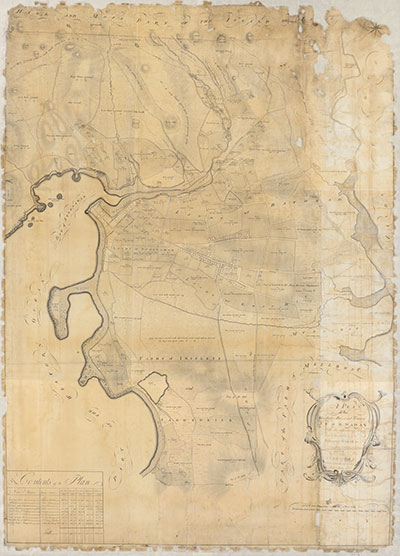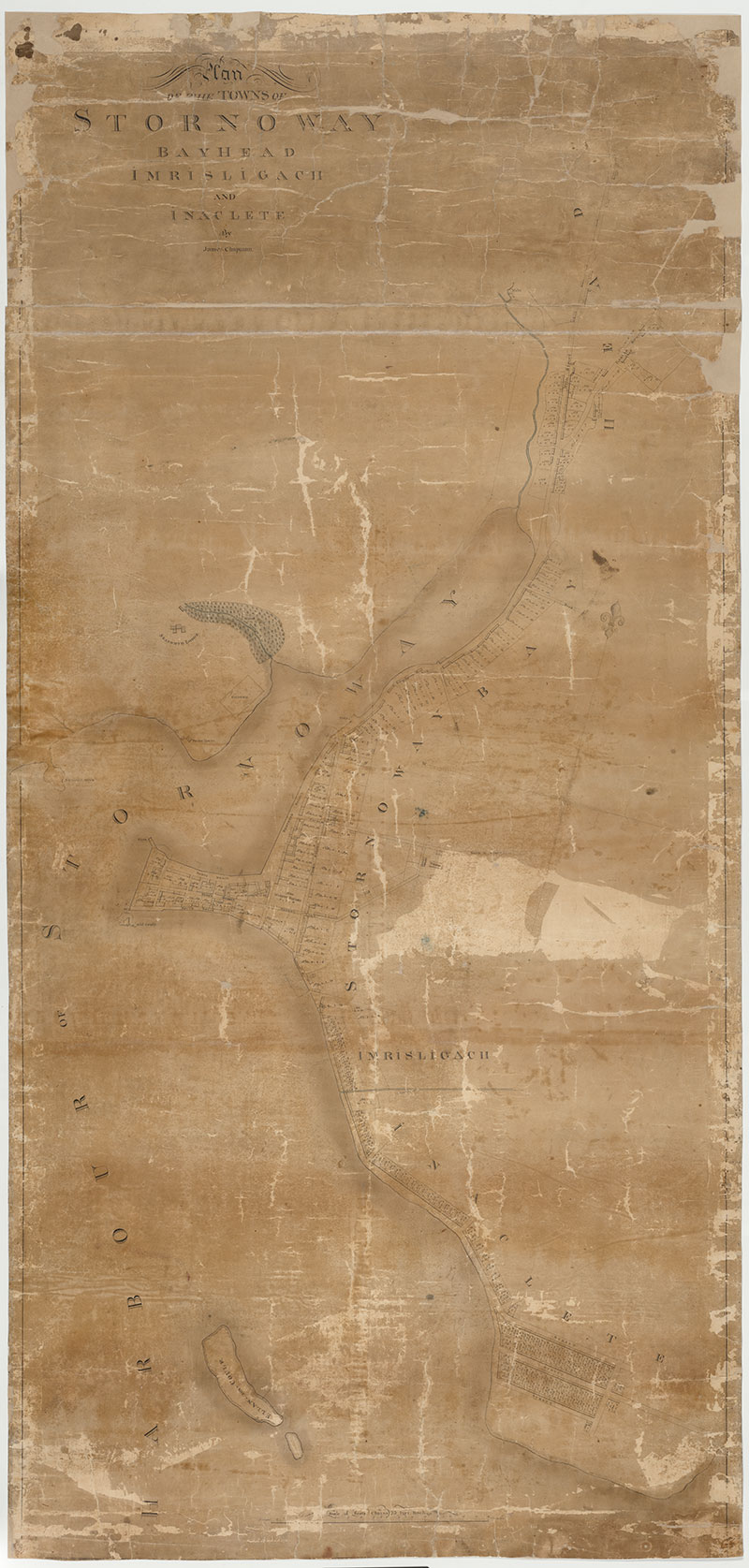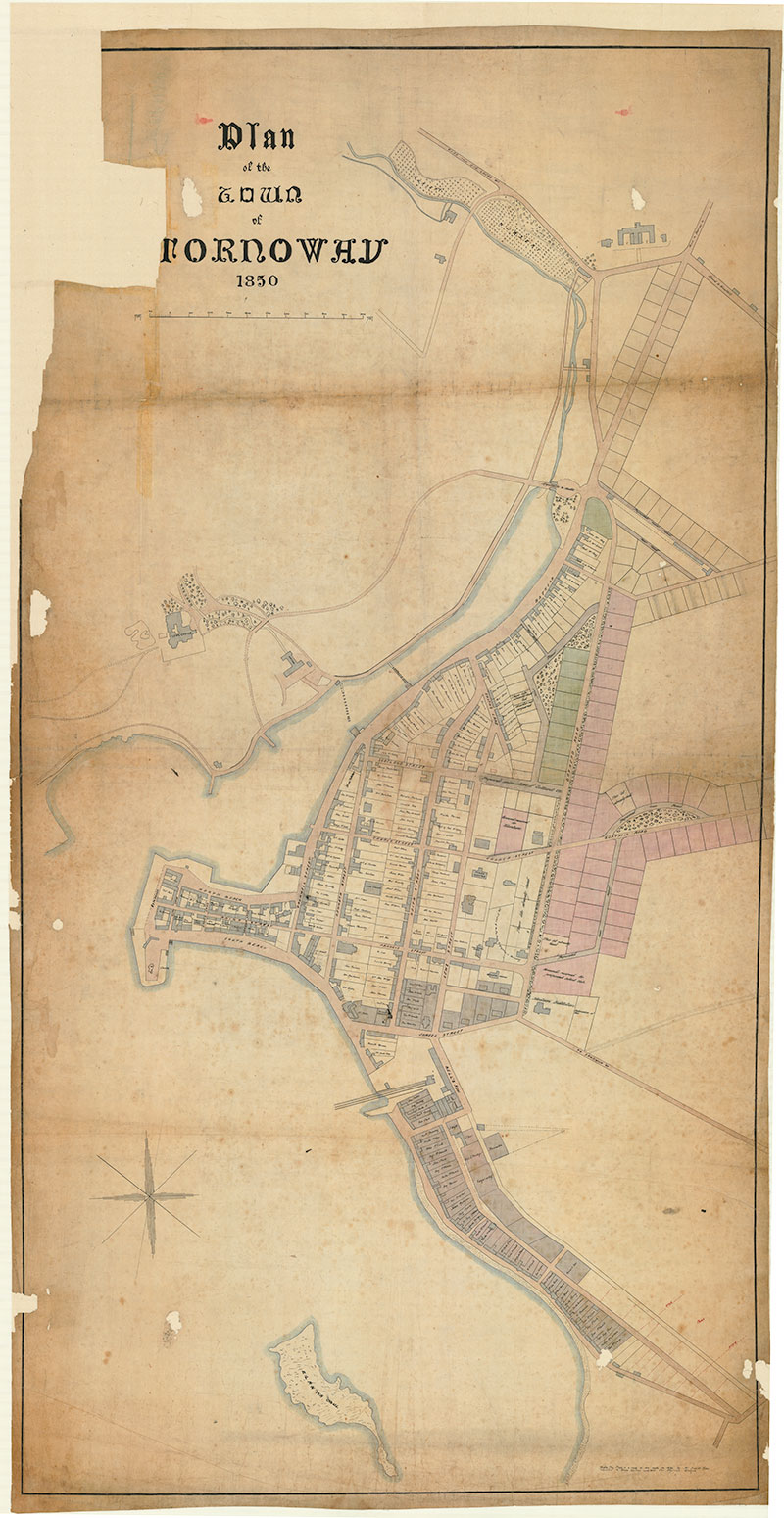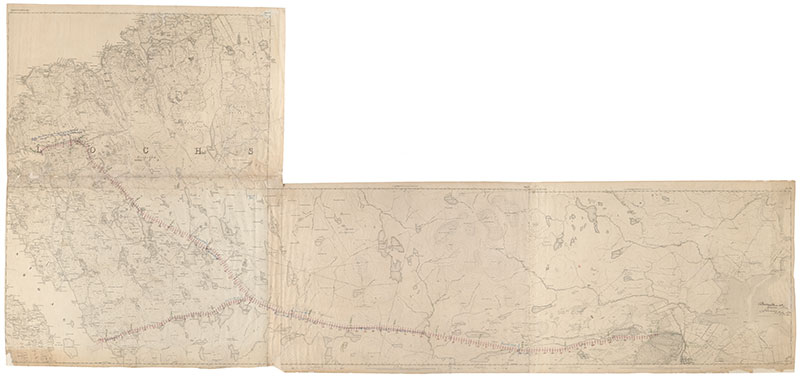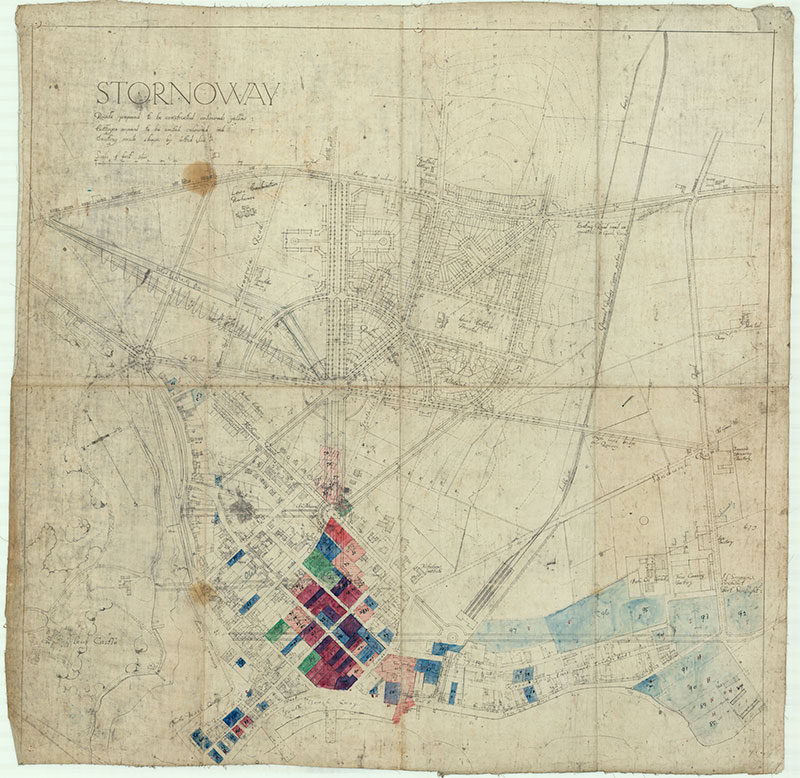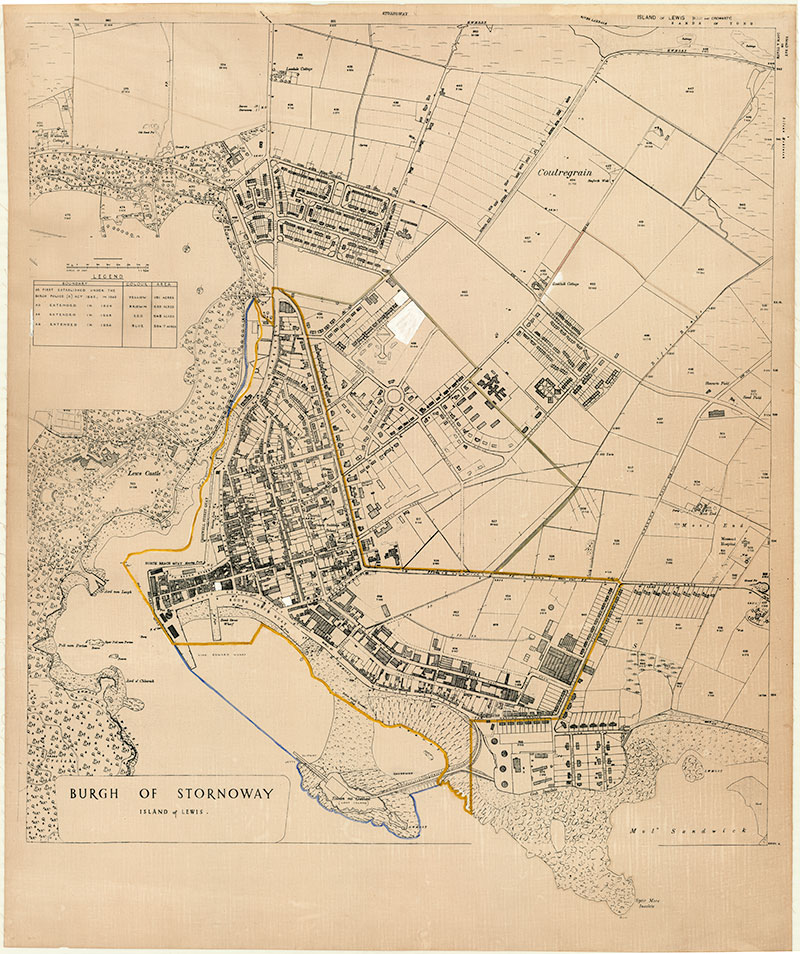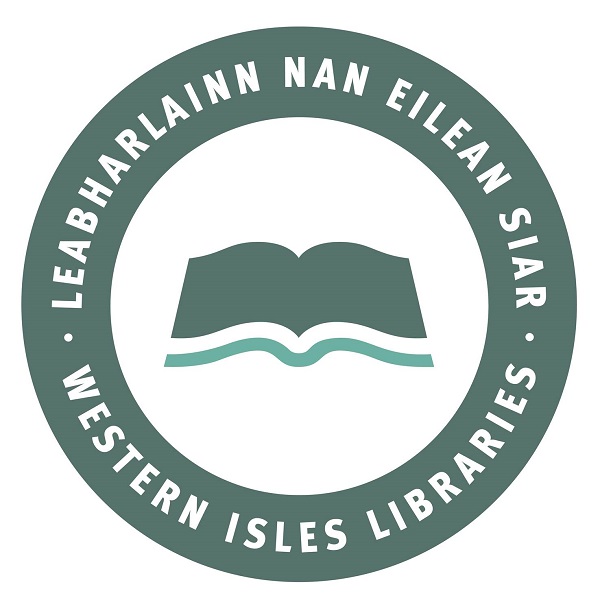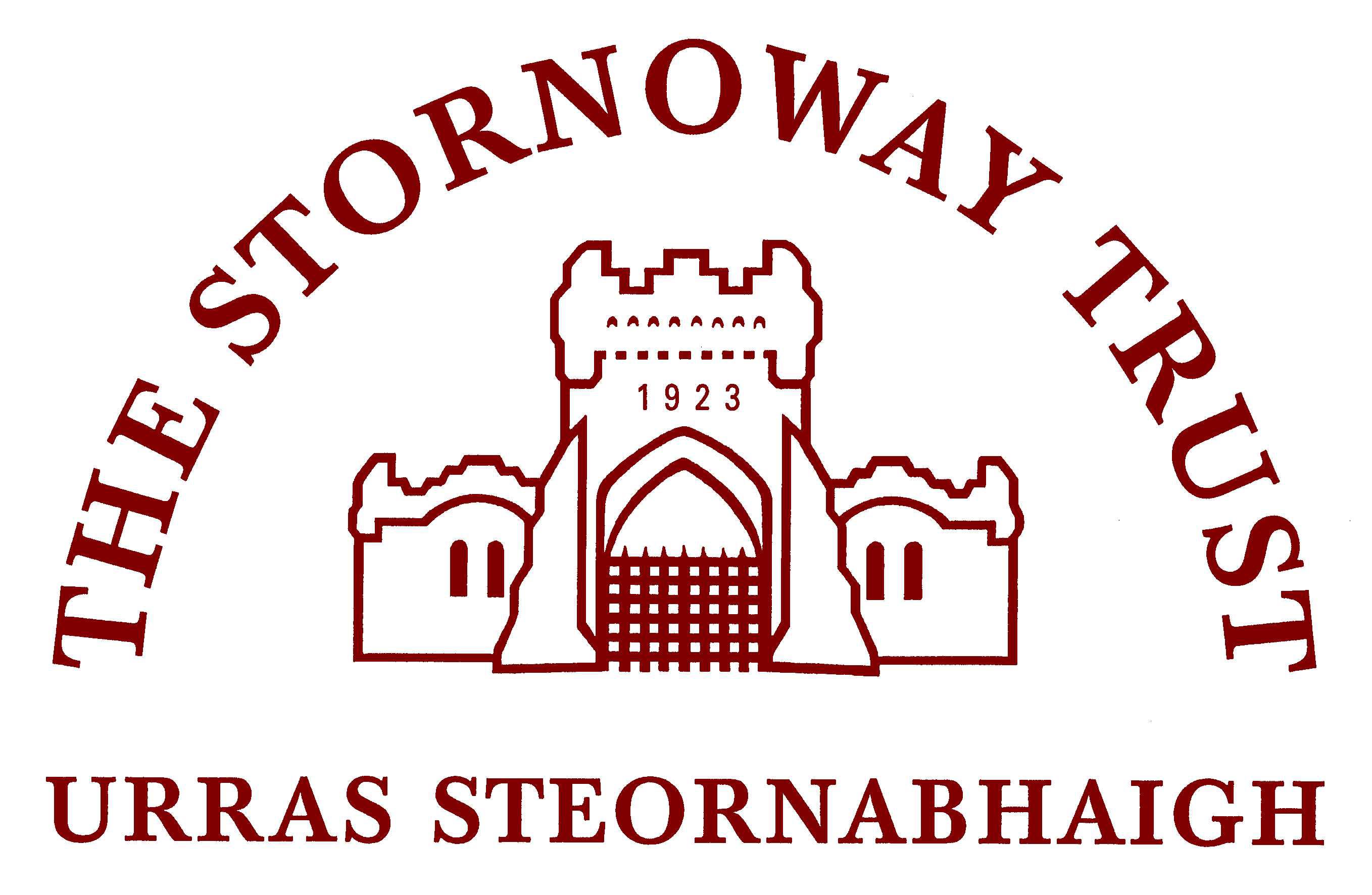John Wood (c.1780–1847) was the most significant surveyor of British towns in the early nineteenth century. Between 1818 and 1846, he drew maps of at least 148 towns in Britain – a monumental achievement given the difficulties of travel and a relatively small market for urban maps. In a few cases, Wood borrowed from the work of earlier map makers, and these borrowings are clearly credited, but he more often undertook original survey, as is certainly the case for Stornoway.
John Wood’s printed plan is particularly valuable for its list of the main property owners in Stornoway itself, several of whom had had illustrious careers overseas. Captain John Mackenzie (who lived at the corner of South Beach and Quay Lane) had distinguished himself at the defence of Gibraltar against the combined forces of Spain and France (1779–1783), and died in 1830 aged 67. Further east along South Beach we can see Carn House, the property of Colonel Colin McKenzie, who died in May 1821 in Chowringhee near Calcutta, the year this map was published. Mackenzie left Stornoway/Steòrnabhagh for Madras in 1783, and, in 1815, was appointed Surveyor General of India, headquartered at Fort William in Calcutta. It is possible that the £30,000 which Mackenzie left his sister in Stornoway/ Steòrnabhagh, which she used to support numerous charitable causes, funded the work by Wood. Further east again, at a building marked ‘McLeod Esq’ (today the site of Martin’s Memorial Church), was the birthplace of Alexander Mackenzie, the Canadian explorer, remembered for his pioneering traverse across the Rockies to establish a landward route across Canada.
The National Library of Scotland also holds a manuscript plan of Stornoway, dating from this time, with several planned (and unrealised) developments, including an elaborate circus around the Church (today St Columba's Old Parish Church). This is sketched in the small inset “...Bay of Stornoway” map with projected improvements. Although never built, the idea was kept alive in later years: Leverhulme’s plans for a new canning factory in the town in 1918 used Wood’s design as a model.
Wood settled in Edinburgh from 1813, and his initial work focused on Scottish towns; 48 of these were gathered together into his Town Atlas of Scotland (1828), together with a detailed Descriptive Account of the Principal Towns in Scotland (1828), with its useful description of places, including Stornoway:
"Stornoway was, within the last twenty years, only a small fishing Village, but from the spirited and patriotic exertions of Lord Seaforth, the proprietor, and the grant of irredeemable feus for building, it has become a place of considerable importance as a Fishing station. No place in the north of Scotland, and in an insulated situation, also, has made more rapid strides at improvement, both in a domestic and commercial point of view, than Stornaway. The fisheries, especially for white fish, is conducted on a large scale. The number of boats fitted out annually for that fishery, amount on average to 120."
